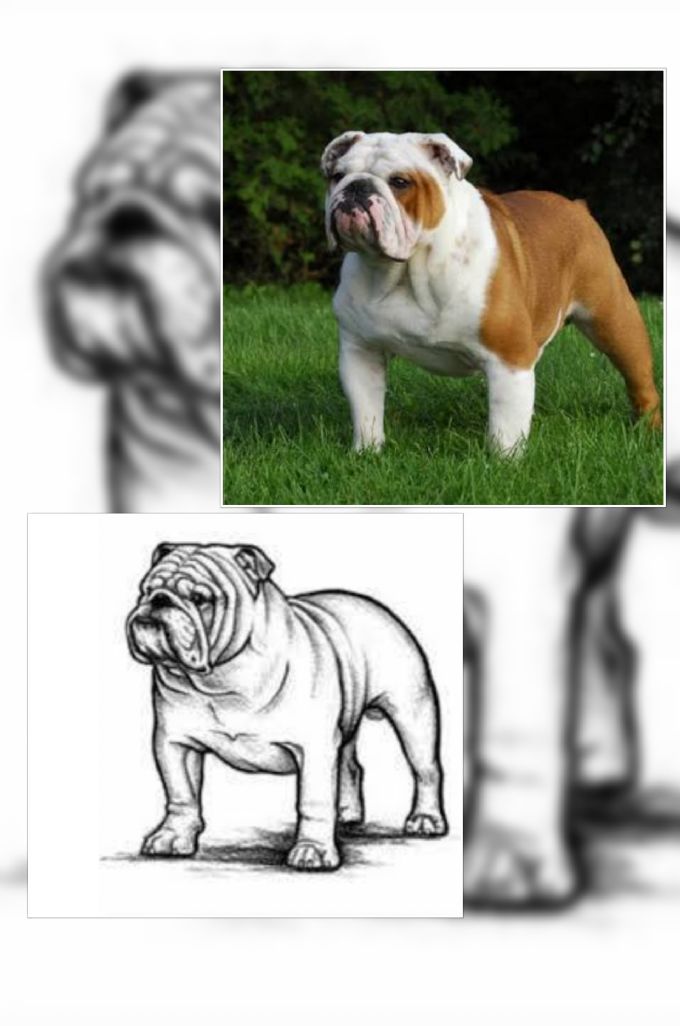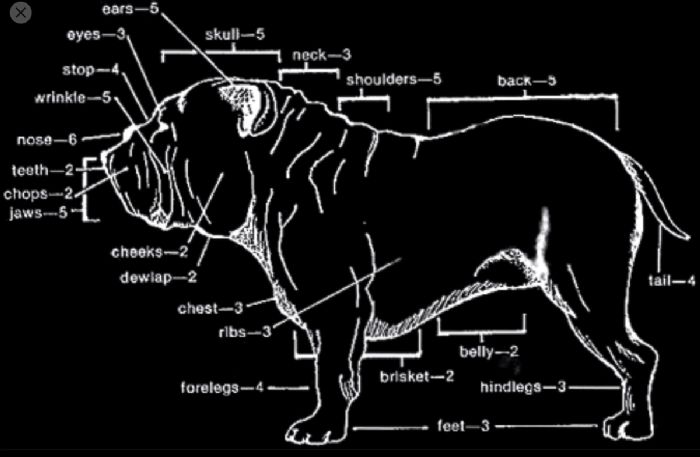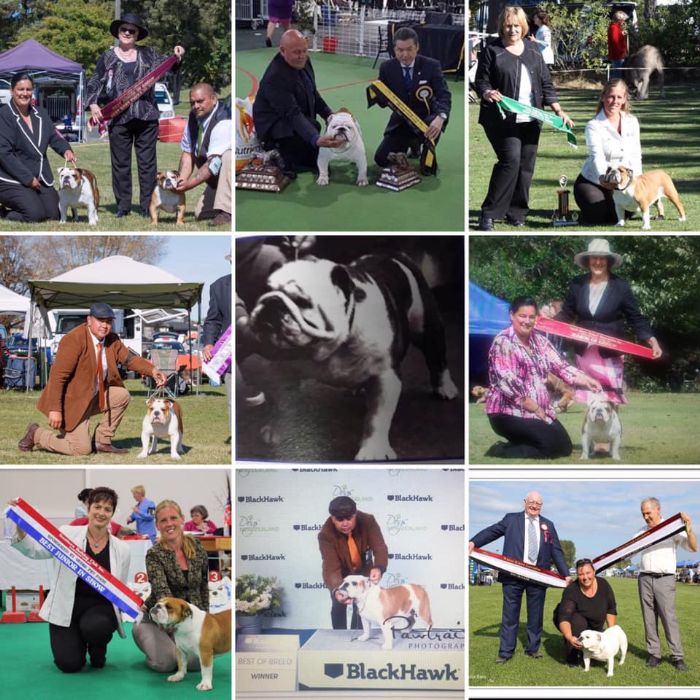Our Breeds: British Bulldog
Sub-links for this page


The bull-dog was first bred in Britain and earned both its name and reputation for tenacity due to its use in the grisly blood sport of bullbaiting. In these horrifying games, one dog would be set at a time on a bull that was either tied to a post or placed in a hole in the ground and whichever dog pinned the bull to the ground would be the winner. Selective breeding caused them to develop their oversized heads, sharp teeth and stout frames, as well as their indomitable character. At first, the bulldog was considered every bit as frightening as the sport for which it was raised. In 1579, it was described by the English physician and scholar John Caius as “vaste, huge, stubborne, ougly and eager, of a heft and burthenous body …terrible and frightful to beholde”. By the eighteenth century, however, the bulldog’s spirited intransigence was being celebrated. The “ancient genuine race of true bred English bulldogs” were praised for “excelling in fight, victorious over their enemies, undaunted in death”. As this comment suggests, commentators began to emphasise the bulldog’s fearlessness and English pedigree. For example, in his entry for “bulldog” in his celebrated 1755 A Dictionary of the English Language, the English writer and lexicographer Samuel Johnson observed that the breed was “particular to Britain” and “remarkable for its courage”.
At the beginning of the nineteenth century, the connection between the bulldog’s stoutheartedness and a perceived national tendency towards undaunted perseverance was made explicit when the MP Mr. Windham objected to a proposed ban on bullbaiting on the grounds that “the sport kept alive the spirit of the English character”.While this brutal pastime was banned finally in 1835, the bulldog retained its reputation for hardnosed determination. In the 1860s, the English biologist and educator Thomas Henry Huxley was nicknamed “Darwin’s bulldog” for his staunch public defense of evolutionary theory. And political cartoonists came increasingly to portray the bulldog as the companion of John Bull: the jolly, fat, middle-aged man deployed as a personification of the United Kingdom. Like his master, the bulldog’s drooping lips and pot-bellied frame was believed to conceal a formidable resolve.
Increasingly, the bulldog was deployed as an emblem of British nationalism. In the chorus of his jingoistic 1897 music-hall anthem “Sons of the Sea” the composer Arthur Reece celebrated the sailors and shipbuilders of the British Empire as “boys of the bulldog breed/ Who made old England’s name”. And during World War I British propaganda presented the bulldog as a symbol of British bravery in the face of German might. One postcard from the era depicts a tank the shape of a bulldog about to mow down German soldiers in a trench. Another displays a British bulldog adamantly refusing sausages from a German soldier. In the 1920s, the British solider and writer H. C. McNeile created a series of highly popular novels featuring Hugh “Bulldog” Drummond, a bored World War I veteran who leaves his civilian lifestyle for a life of gentlemanly adventure, often battling German enemies. At the same time as constituting a laudable image of the hardworking outsider, the bulldog could provide a screen for belligerence and xenophobia.
The use of the bulldog as a symbol of British indomitability arguably reached its apex during World War II, when the animal’s cultural representation was fused with the persona of the British Prime Minister Winston Churchill. In physical terms, the dog and the wartime leader shared a rounded face, jowly cheeks and a tubby anatomy. More importantly, the bulldog’s persistence appeared to mirror the determination of a politician who had resisted widespread calls to appease Adolf Hitler in the 1930s and led the British Empire and Commonwealth between 1940 and 1941 when it stood alone against Germany. A British caricature of the period portrays Churchill as a giant bulldog perched on the British mainland looking defiantly towards Continental Europe wearing an air-raid helmet with the slogan “Go to It” emblazoned upon it. Similarly, a 1942 American propaganda poster shows Churchill as a bulldog with the slogan “Holding the Line” to emphasize Britain’s noble tenacity. The connection between Churchill and the bulldog continued to be so strong in the twenty-first century that the British company “Churchill Insurance” chose the animal as its mascot in a series of television adverts.
For the many families in New Zealand that own this beautiful stubborn breed the history is but a small part of the reason they have and love their bulldogs. As show dogs healthy bulldogs bred to the NZ Bulldog Breed Standard have shown and won in the show ring for many years. Two of our Bulldog Clubs have existed for a century or more. There is a long and loved history for this dog and our clubs and the taskforce work hard to protect that legacy and to educate breeders and the public about healthy bulldogs.

